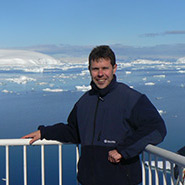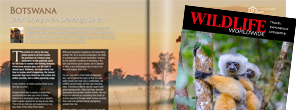Antarctica information – wildlife cruising FAQs

In the past many of you have chosen to sail with us to Antarctica - bearing this in mind, here are answers to a few specific questions about cruising in Antarctica.
- Where do Antarctic trips depart from?
- What are the weather and sea conditions going to be like in the Antarctic Peninsula?
- I’ve heard a lot about the scientific bases – will we get a chance to visit them?
- Can you swim in Antarctica?
- What wildlife can I see on a cruise?
Where do Antarctic trips depart from?
The port of departure for most Antarctic voyages is Ushuaia, on the southern coast of Tierra del Fuego in Argentina. Originally a pioneer town, it has increased dramatically in size over the last 20 years and now has numerous hotels, restaurants and shops, which mainly cater for the huge increase in visitors to the Antarctic. Ushuaia has one of the most stunning settings imaginable, on the edge of the Beagle Channel. The view across to Chile is spectacular, and the backdrop of the Andes as they reach the sea is equally breathtaking. Some trips – particularly those involving flights to Antarctica – start from Punta Arenas in southern Chile, while a few that visit the outlying islands sail from Port Stanley in the Falkland Islands. Trips to the Ross Sea region of Antarctica generally start from either Hobart in Tasmania, or Lyttelton or Invercargill in New Zealand.
From Ushuaia you can take excursions to Tierra del Fuego National Park, the nearby glaciers, and the islands of the Beagle Channel. There’s much to see in Argentina, Chile or the Falklands, so you may wish to consider adding a short extension either before the start or at the end of your voyage.
What are the weather and sea conditions going to be like in the Antarctic Peninsula?
This is probably the question we’re asked most frequently – and of course there’s no easy answer! Weather and sea conditions are extremely variable and can change rapidly. There’s never any guarantee of good weather – even in the height of the Antarctic summer. The crossing of the Drake Passage from Ushuaia to the Antarctic Peninsula is notorious – you can expect rough seas around fifty per cent of the time on this leg (indeed this applies to most of the Southern Ocean). The waves can reach staggering heights, but if you’ve got your sea legs there’s still a lot of wildlife to be seen – including the ocean’s aerial masters, albatrosses and petrels.
I’ve heard a lot about the scientific bases – will we get a chance to visit them?
During the trip the ship will make at least one stop at a scientific base. Esperanza is an Argentinean base on the Antarctic Peninsula, notable because it has a school with some twenty pupils! Tours of the research station are fascinating – as the scientists take you around they’ll explain their work and demonstrate how they cope with the weather. There’s a long history of scientific work in the Antarctic so many bases have interesting museums dedicated to science or exploration.
Can you swim in Antarctica?
Amazingly, you can… but it’s not for the faint of heart! Where you swim will depend on your itinerary, but many voyages take in Deception Island, where the expedition staff will dig a small pool in the sand in which – after a very short dip in the bay (1°C) you can warm up (40°C)! So, if you think you might want to try it, don’t forget your cozzie!
What wildlife can I see on a cruise?
Whales
Minke are found in the ice floes around the Antarctic Peninsula, while humpback, beaked, fin, sei, southern right, and blue whales are found in the Southern Ocean. Orcas (killer whales) are regularly sighted among the ice floes right up to the Falkland Islands.
Birds
Sooty shearwaters and numerous gulls around continental South America; albatrosses, petrels and prions in the Southern Ocean; the South Georgia pipit among the tussock grasses on South Georgia, and a selection of endemic birds on the Falkland Islands.
Seals
Weddell seals are the most southerly of all the Antarctic seals, and are generally spotted near ice. Leopard seals are common around the Antarctic Peninsula, especially near penguin colonies. Crab-eater seals are found around pack ice throughout the region. Antarctic fur seals are found mainly near the Antarctic Peninsula and South Georgia, while elephant seals occur over much of the Southern Ocean.
Other mammals
Reindeer – these are found on South Georgia, having been introduced by sealers and whalers many years ago.
Penguins
If you want to see emperor penguins, you must select a voyage that takes you to the Ross Sea, or visit the only known emperor penguin rookery on the Antarctic Peninsula at Snow Hill.
King penguins are seen in massive numbers on South Georgia (some also occur on the Falklands). They breed over a two year cycle so whenever you go to Antarctica you’re likely to see all stages of the cycle – from eggs being incubated by adults, to scrawny, brown, newly-hatched chicks, and bedraggled, moulting sub-adults. There’s a significant concentration of macaroni penguins on South Georgia, while rockhopper and Magallenic penguins are Falkland Islands ‘specials’. For chinstrap and gentoo penguins the Peninsula is the place, while Adelie penguins breed further south than any other penguin and are found all around the continent.
View our Antarctica trips.








